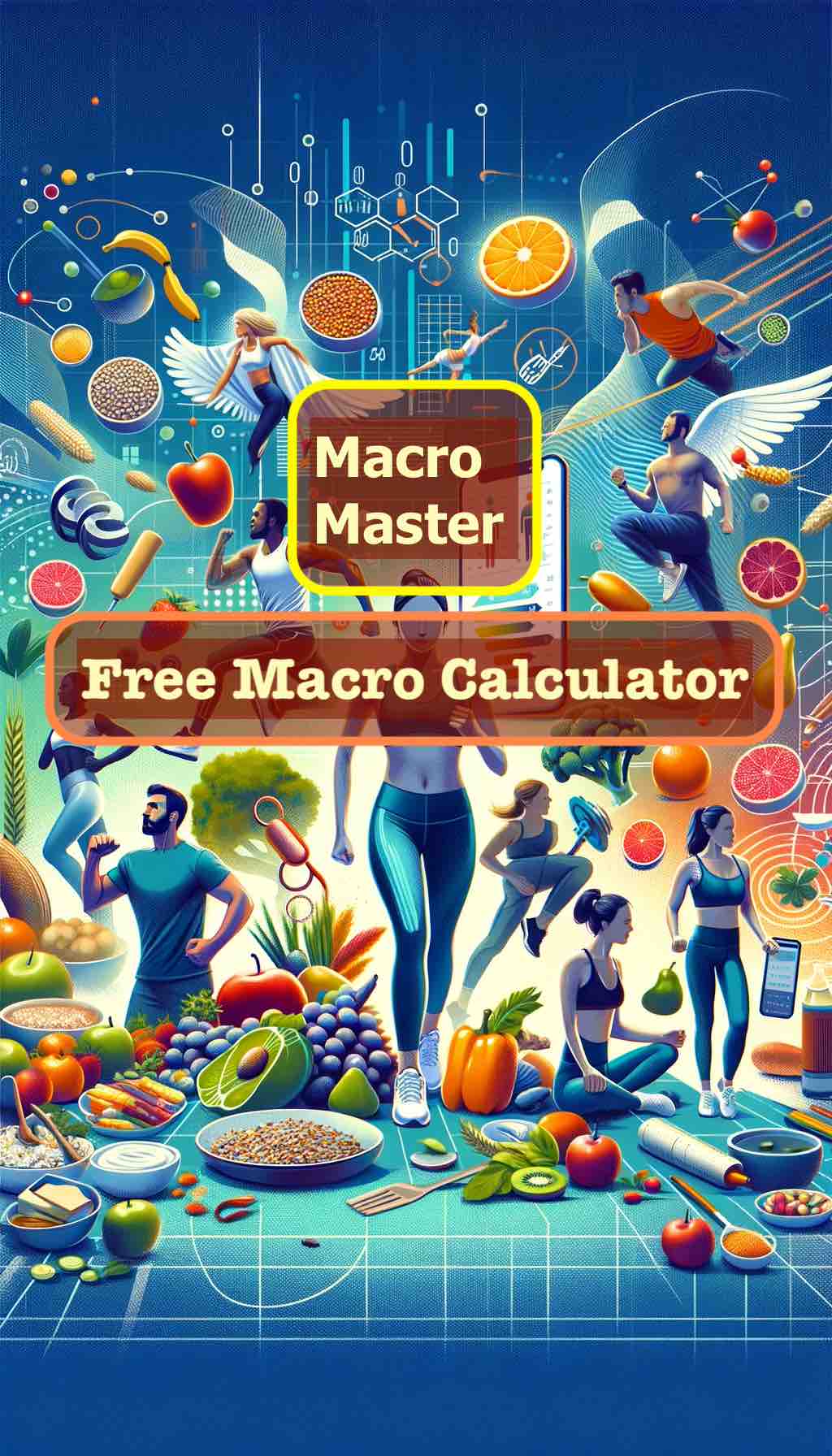
I. Introduction
In a world where quick fixes and short-term solutions dominate the fitness and wellness landscape, the 75 Hard Challenge emerges as a beacon of mental resilience and physical transformation. Created by entrepreneur Andy Frisella, this rigorous program transcends the boundaries of typical fitness challenges, offering not just physical rejuvenation but also a complete mental overhaul. In this comprehensive guide, embark on a journey to understand the depths of the 75 Hard Challenge, unravel its components, and explore the transformative stories of individuals who have conquered their limitations and reshaped their lives. Discover the intricate details, the unwavering rules, and the potent impact of this 75-day challenge that has taken the world by storm. Are you ready to transform your mind and body in 75 days? Dive in to unearth the world of 75 Hard Challenge.
II. What is the 75 Hard Challenge?
Overview
The 75 Hard Challenge is not your ordinary fitness program. It’s a mental toughness program designed by Andy Frisella, aiming to enhance your mental fortitude, self-discipline, and resilience while transforming your body. It’s a holistic approach to wellness, focusing equally on your mental and physical dimensions, ensuring a comprehensive transformation that lasts beyond the 75 days.
The Philosophy Behind 75 Hard
At its core, the 75 Hard Challenge is rooted in the philosophy of self-improvement, discipline, and consistency. It’s about making a commitment to yourself to adhere to a set of rules that encompass diet, exercise, reading, and other elements, consistently for 75 days. The challenge is not just about losing weight or building muscle; it’s about developing a mental toughness that permeates every aspect of your life, empowering you to overcome obstacles, face challenges head-on, and achieve your goals.
The Components
The 75 Hard Challenge is composed of several key components, each designed to contribute to your mental and physical transformation:
- Follow a Diet: Adhere to a healthy diet throughout the 75 days, without any cheat meals.
- Exercise Twice a Day: Engage in two 45-minute workouts daily, one of which must be outdoors.
- Drink Gallon of Water: Ensure adequate hydration by drinking a gallon of water daily.
- Read 10 Pages: Read 10 pages of a non-fiction self-help book every day.
- Take a Progress Picture: Document your journey by taking a progress picture daily.
By integrating these components into your daily routine, the 75 Hard Challenge promises a transformation that transcends physical appearance, instilling discipline, resilience, and mental toughness.
Introducing Our FREE 75 Hard Challenge Tracker
Our 75 Hard Challenge Tracker offers a seamless solution for monitoring progress throughout your 75-day journey. Leveraging browser local storage, your daily notes are securely stored locally on your device, ensuring your progress is preserved even when you close your browser or navigate away from the page. However, it’s important to note that this data is specific to each browser and device and will not synchronize across multiple platforms. Should you clear your browser history or local storage data, your tracked progress will be lost. Therefore, we encourage users to use caution when managing browser data to ensure their hard-earned progress is safeguarded.
Whenever you need to update, open this page in the same browser, and this works. We do not sync any of your data, everything is 100% private to you.
75 Hard Challenge Tracker
III. The Origin of the 75 Hard Challenge
The Creation by Andy Frisella
Andy Frisella, a renowned entrepreneur and the CEO of 1st Phorm International, conceived the 75 Hard Challenge as a means to cultivate mental toughness and discipline. Frisella designed this challenge based on his personal experiences, insights, and the understanding that true transformation begins in the mind. He introduced the 75 Hard Challenge on his podcast, “The MFCEO Project,” where he detailed the rules, components, and the philosophy behind this transformative program.
The Evolution
Since its inception, the 75 Hard Challenge has evolved into a global movement, inspiring thousands worldwide to embark on this journey of self-improvement and transformation. The challenge’s holistic approach, emphasizing both mental and physical development, has resonated with individuals from diverse backgrounds, reinforcing the idea that mental toughness and physical wellness are inextricably linked.
The Impact
The 75 Hard Challenge has made a profound impact on participants, fostering a community of individuals united by their commitment to self-improvement, discipline, and mental resilience. The challenge has not only facilitated physical transformations but also catalyzed significant mental and emotional growth, empowering participants to lead more fulfilled, disciplined, and resilient lives.
In the subsequent sections of this guide, delve deeper into the detailed breakdown of the challenge, explore real-life transformation stories, understand the stringent rules, and uncover the resources and tools essential for successfully navigating the 75 Hard Challenge. Stay tuned as we unravel the world of 75 Hard, offering insights, information, and inspiration for your transformative journey.
Are you prepared to embark on the 75-day journey to transform your mind and body? The 75 Hard Challenge awaits you. Join the movement, embrace the discipline, and unleash your true potential. Your path to transformation begins now.
IV. Detailed Breakdown of the Challenge
1. Diet
Overview:
The 75 Hard Challenge mandates adherence to a diet of your choice for the entire 75 days. This component is not just about weight loss or physical transformation; it’s about discipline, commitment, and the mental fortitude to make healthy choices consistently.
Choosing the Right Diet:
Select a diet that aligns with your nutritional needs, goals, and lifestyle. Whether it’s keto, vegan, paleo, or any other diet, the key is consistency and adherence without any cheat meals. Consult a nutritionist or dietitian to make an informed choice.
Tips for Success:
- Plan your meals in advance.
- Avoid processed foods and prioritize whole, nutritious foods.
- Stay committed and resist temptations.
2. Exercise
Overview:
Exercise is a pivotal component of the 75 Hard Challenge, requiring participants to engage in two 45-minute workouts daily. One workout must be outdoors, emphasizing the importance of connecting with nature and building resilience in varying environments.
Types of Exercises:
Incorporate a mix of cardiovascular exercises, strength training, flexibility workouts, and outdoor activities. Tailor your exercise routine to your fitness level and goals, ensuring it is sustainable and effective.
Tips for Success:
- Create a balanced workout schedule.
- Listen to your body and prioritize recovery.
- Embrace the outdoor workouts as opportunities for mental and physical growth.
3. Reading
Overview:
Reading is an integral part of the 75 Hard Challenge, fostering mental growth, knowledge expansion, and self-improvement. Participants must read 10 pages of a non-fiction self-help book daily, nurturing a habit of consistent learning and personal development.
Choosing the Right Book:
Select books that resonate with your personal and professional goals, offering insights, inspiration, and practical knowledge for self-improvement and growth.
Tips for Success:
- Dedicate a specific time each day for reading.
- Take notes and reflect on the learnings.
- Apply the insights and knowledge in your daily life.
4. Water Intake
Overview:
Hydration is crucial for optimal health and wellness. The 75 Hard Challenge emphasizes the importance of adequate water intake, requiring participants to drink a gallon of water daily.
The Importance of Hydration:
Proper hydration supports physical performance, enhances cognitive function, aids in digestion, and promotes overall health.
Tips for Success:
- Carry a water bottle with you at all times.
- Monitor your water intake to ensure you meet the daily requirement.
- Stay mindful of your hydration levels, especially during workouts.
5. Progress Pictures
Overview:
Documenting your journey is essential for tracking progress, staying motivated, and celebrating achievements. The 75 Hard Challenge requires participants to take a daily progress picture, creating a visual record of their transformation.
The Impact of Visual Documentation:
Progress pictures offer tangible evidence of your transformation, highlighting the changes, achievements, and improvements over the 75 days.
Tips for Success:
- Take pictures at the same time and place each day for consistency.
- Use the pictures as motivation and a reminder of your commitment and progress.
V. Personal Transformation Stories
In this section, immerse yourself in the inspiring stories of individuals who have successfully completed the 75 Hard Challenge. Explore their journeys, the obstacles they overcame, the transformations they achieved, and the insights they gained. These real-life stories offer motivation, inspiration, and a deeper understanding of the impact of the 75 Hard Challenge on mental and physical well-being.
Example Stories:
- John’s Journey:
- Before: Struggled with consistency, low self-esteem, and lack of discipline.
- After: Developed mental toughness, improved physical fitness, and gained self-confidence.
- Key Takeaway: The challenge instilled discipline, resilience, and a commitment to self-improvement.
- Maria’s Transformation:
- Before: Faced challenges with weight, mental health, and self-belief.
- After: Achieved weight loss, enhanced mental clarity, and cultivated self-belief.
- Key Takeaway: The 75 Hard Challenge was a catalyst for holistic transformation and self-belief.
Stay tuned as we delve deeper into the rules of the 75 Hard Challenge, explore the 75 Soft Challenge, analyze the pros and cons, and provide a comprehensive FAQ section to address all your queries and concerns. Your journey to transformation is laden with knowledge, insights, and unwavering support as you navigate the path of the 75 Hard Challenge. Your ultimate guide to transforming your mind and body continues, are you ready for the next chapter?
VI. The Rules of the 75 Hard Challenge
In this section, we delve deeper into the specific rules of the 75 Hard Challenge. Understanding and adhering to these rules is crucial for the successful completion of the challenge and achieving the desired mental and physical transformation.
1. Follow a Diet
Specifics:
- Choose a diet that aligns with your health and fitness goals.
- No cheat meals allowed throughout the 75 days.
- Alcohol is strictly prohibited.
Importance:
Following a consistent diet enhances nutritional intake, supports physical fitness goals, and instills discipline in making healthy food choices. It reinforces the commitment to health and wellness, promoting overall well-being.
Strategies for Adherence:
- Plan and prepare meals in advance to avoid temptations.
- Educate yourself about the nutritional value of different foods to make informed choices.
- Consult a nutritionist to tailor a diet plan that meets your specific needs and goals.
2. Exercise Twice a Day
Specifics:
- Engage in two 45-minute workouts daily.
- One workout must be outdoors, regardless of weather conditions.
- Choose exercises that align with your fitness level and goals.
Importance:
Regular exercise enhances physical fitness, improves mental health, and fosters discipline, resilience, and consistency. The outdoor workout component emphasizes adaptability and mental toughness in facing diverse conditions.
Strategies for Adherence:
- Create a diverse and balanced workout schedule incorporating various forms of exercise.
- Ensure proper warm-up and cool-down sessions to prevent injuries.
- Listen to your body and modify exercises as needed to avoid overexertion.
3. Read 10 Pages Daily
Specifics:
- Read 10 pages of a non-fiction self-help book daily.
- Choose books that contribute to personal and professional growth.
Importance:
Reading fosters continuous learning, mental stimulation, and personal development. It enhances knowledge, provides new perspectives, and contributes to mental clarity and focus.
Strategies for Adherence:
- Allocate a specific time each day for uninterrupted reading.
- Choose books that resonate with your goals, challenges, and interests.
- Engage in discussions or reflections to internalize and apply the knowledge gained.
4. Drink a Gallon of Water Daily
Specifics:
- Ensure a daily water intake of one gallon.
- Monitor hydration levels, especially during workouts.
Importance:
Adequate hydration is essential for optimal bodily functions, physical performance, and overall health. It supports digestion, nutrient absorption, and mental alertness.
Strategies for Adherence:
- Carry a reusable water bottle to ensure constant access to water.
- Set reminders to drink water at regular intervals throughout the day.
- Pay attention to signs of dehydration and adjust water intake accordingly.
5. Take a Daily Progress Picture
Specifics:
- Take a daily picture to document your physical transformation.
- Ensure consistency in timing, lighting, and location for accurate comparison.
Importance:
Visual documentation provides tangible evidence of progress, motivates continued effort, and serves as a record of the transformation journey.
Strategies for Adherence:
- Set a daily reminder to take your progress picture.
- Create a dedicated folder or album to organize and view your pictures.
VII. The 75 Soft Challenge
In this section, explore the 75 Soft Challenge, a contrasting approach to the 75 Hard Challenge. Understand the differences, objectives, and components of the 75 Soft Challenge, offering a different perspective on mental and physical transformation.
Overview:
The 75 Soft Challenge, also created by Andy Frisella, is designed as a more accessible and flexible approach to transformation. While it retains the essence of self-improvement and growth, it provides alternatives and modifications to the stringent rules of the 75 Hard Challenge.
Components:
- Modified Diet and Exercise:
- More flexibility in choosing a diet and exercise routine.
- Emphasis on gradual and sustainable changes.
- Mindfulness and Mental Health:
- Incorporation of mindfulness practices and mental health activities.
- Focus on mental well-being and emotional balance.
- Personalized Approach:
- Tailor the challenge to individual needs, goals, and limitations.
- Encouragement for personalization and adaptability.
Comparison with 75 Hard:
Understand the distinctions between the 75 Hard and 75 Soft Challenges, analyzing the different approaches, objectives, and outcomes. Evaluate the suitability of each challenge based on your personal circumstances, goals, and preferences.
VIII. Pros and Cons
In this comprehensive section, undertake an objective analysis of the 75 Hard Challenge, evaluating the potential benefits and drawbacks. This analysis provides a balanced perspective, aiding in informed decision-making regarding participation in the challenge.
Pros:
- Holistic Transformation:
- Achieve both mental and physical transformation.
- Enhance mental toughness, discipline, resilience, and self-confidence.
- Structured Approach:
- Clear and specific rules provide structure and guidance.
- Eliminate guesswork and ambiguity in the transformation journey
.
- Community Support:
- Become part of a global community of like-minded individuals.
- Access support, motivation, and inspiration from fellow participants.
Cons:
- Intensity and Rigor:
- The challenge’s intensity may not be suitable for everyone.
- Potential risk of overexertion, burnout, or injury.
- Time Commitment:
- Significant daily time commitment for exercise, reading, and other components.
- May be challenging to balance with other responsibilities and commitments.
- Lack of Flexibility:
- Stringent rules leave little room for flexibility or modifications.
- May be difficult for individuals with specific limitations or constraints.
In the subsequent sections, delve into a comprehensive FAQ segment, explore additional resources and tools, and gain insights into successfully navigating and completing the 75 Hard Challenge. Your transformation journey is enriched with extensive knowledge, practical strategies, and unwavering support, ensuring you are well-equipped to embark on the 75-day challenge to transform your mind and body. Stay tuned for more insights, information, and inspiration as you prepare for the transformative journey of the 75 Hard Challenge. Your path to holistic wellness, mental resilience, and physical fitness continues, are you ready to embrace the challenge and unleash your true potential?
IX. FAQs
In this section, we address the most frequently asked questions about the 75 Hard Challenge, providing clear, concise, and comprehensive answers to help you gain a deeper understanding and make informed decisions.
1. Is the 75 Hard Challenge Suitable for Everyone?
- Answer: The 75 Hard Challenge is a rigorous program designed for individuals seeking significant mental and physical transformation. It may not be suitable for everyone, especially those with certain medical conditions or physical limitations. It’s crucial to consult a healthcare professional before starting the challenge to ensure it aligns with your health and fitness levels.
2. Can I Modify the Rules of the Challenge?
- Answer: The 75 Hard Challenge emphasizes strict adherence to its set rules. Modifications or deviations from the rules are not allowed, as they undermine the challenge’s objective of fostering mental toughness, discipline, and resilience.
3. What If I Miss a Day or Fail to Follow the Rules?
- Answer: If you miss a day or fail to follow any of the rules, you must start the challenge from day one. This rule reinforces the importance of consistency, commitment, and resilience.
4. Can I Follow a Different Diet or Exercise Routine?
- Answer: You have the flexibility to choose a diet or exercise routine that aligns with your goals and preferences. However, you must adhere to your chosen diet and exercise routine consistently throughout the 75 days.
5. Is the 75 Soft Challenge an Easier Version of the 75 Hard Challenge?
- Answer: The 75 Soft Challenge offers a different approach, focusing on flexibility, mindfulness, and mental well-being. It is not merely an easier version but provides an alternative path for individuals seeking transformation with a more personalized and adaptable framework.
X. Resources and Tools
In this section, discover a curated list of resources and tools designed to support, guide, and enhance your 75 Hard Challenge journey. From official websites to supportive communities, access a wealth of information, insights, and assistance.
1. Official Website and App
- Website: 75 Hard Official Website
- App: 75 Hard App available on iOS and Android platforms.
- Features: Access official information, guidelines, and support. Track your progress, document your journey, and stay motivated with the official app.
2. Books and Podcasts
- Books: Explore a range of self-help and personal development books to fulfill the reading component of the challenge.
- Podcasts: Listen to Andy Frisella’s podcasts for motivation, insights, and guidance on navigating the 75 Hard Challenge.
3. Community Forums and Groups
- Forums: Join online forums and groups dedicated to the 75 Hard Challenge.
- Benefits: Connect with fellow participants, share experiences, seek advice, and access motivation and support.
4. Nutrition and Exercise Guides
- Guides: Utilize comprehensive nutrition and exercise guides to plan and optimize your diet and workouts.
- Customization: Tailor your diet and exercise routine to your specific needs, goals, and preferences.
XI. Conclusion
In conclusion, the 75 Hard Challenge stands as a robust program for holistic mental and physical transformation. It transcends the conventional boundaries of fitness challenges, offering a comprehensive approach to self-improvement, discipline, resilience, and wellness. This guide provides an extensive overview, detailed breakdown, and insightful information to equip you for the journey ahead.
Embrace the challenge with commitment, consistency, and courage. Let the 75 Hard Challenge be the catalyst for unveiling your utmost potential, resilience, and transformation. Embark on the 75-day journey to redefine your mind, body, and life. The path to unparalleled growth, wellness, and fulfillment awaits you.
XII. Call to Action
Are you ready to transform your life with the 75 Hard Challenge? Join the global community of individuals dedicated to self-improvement, resilience, and transformation. Begin your journey today, and let the next 75 days be the foundation for a renewed, resilient, and revitalized you. Share this guide with friends, family, and peers, inviting them to embark on the transformative journey of the 75 Hard Challenge. Your path to mental toughness, physical fitness, and holistic wellness begins now. Embrace the challenge, transcend the limits, and unleash your true potential with the 75 Hard Challenge. Your transformation journey starts today!
XIII. PDFs and Downloads
In this section, offer downloadable resources to enhance the reader’s understanding and implementation of the 75 Hard Challenge. Providing these resources adds value to your blog post, making it a comprehensive guide for anyone looking to embark on the 75 Hard Challenge journey.
1. 75 Hard Challenge Official Checklist
- Description: A detailed checklist outlining the rules and components of the 75 Hard Challenge.
- Use: Readers can download and print this checklist to keep track of their daily progress throughout the 75 days.
- Download Link: 75 Hard Printable Checklist – Ryan and Alex
2. 75 Hard Challenge Diet and Exercise Planner
- Description: A customizable planner for outlining the reader’s diet and exercise routine for the 75 days.
- Use: Assist readers in planning, organizing, and adhering to their diet and exercise regimen.
- Download Link: 75 Hard Challenge Templates – Type Calendar
3. 75 Hard Challenge Progress Journal
- Description: A printable journal for documenting daily experiences, progress, and reflections during the 75 Hard Challenge.
- Use: Enable readers to maintain a daily record of their journey, insights, and transformations.
- Download Link: 75 Hard Challenge Rules & PDF Planner – 101 Planners
4. 75 Hard Challenge FAQ and Tips Guide
- Description: A comprehensive guide addressing frequently asked questions and providing practical tips for successfully navigating the 75 Hard Challenge.
- Use: Offer valuable insights, answers, and strategies for readers embarking on the 75 Hard Challenge.
- Download Link: 75 Hard Challenge Templates – Gridfiti













